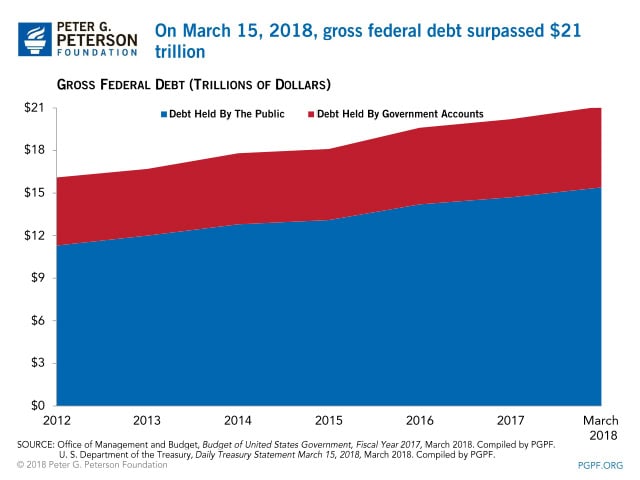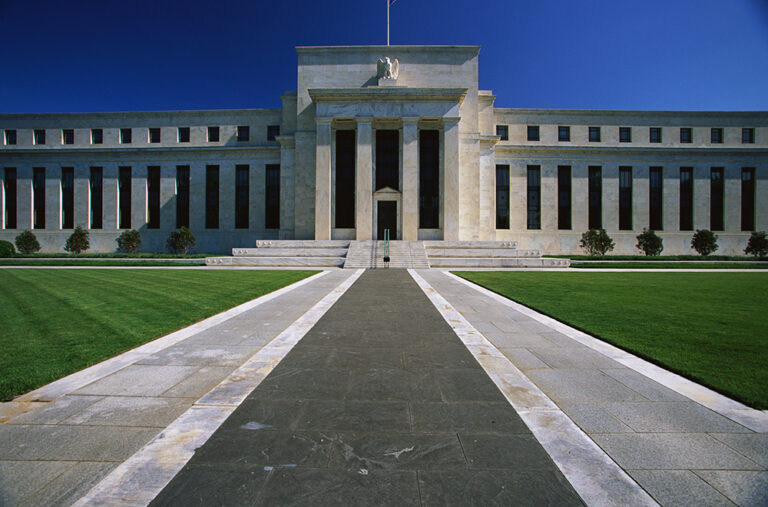On March 15, 2018, the federal government passed an unfortunate milestone: $21 trillion dollars in gross federal debt.
Gross federal debt has grown by $5 trillion in just the last five years—from $16 trillion at the end of fiscal year 2012 to $21 trillion today. More than 80 percent of that growth has come from debt held by the public. It took just six months to add on the most recent trillion dollars.

The growth of our debt stems from a fundamental imbalance between spending and revenues. Growth in spending — driven by an aging population, rising healthcare costs, and mounting interest payments — is outstripping collections of taxes to pay for it. As a result, the national debt is on an unsustainable long-term trajectory that will undermine economic opportunities for individuals and families in the future.
As Foundation CEO Michael Peterson noted, this trend is especially troubling because our fiscal outlook has only begun to reflect the effects of fiscally irresponsible tax and spending legislation that has been enacted in recent months. During a time of low unemployment and economic expansion, now is the time to get the national debt under control — but lawmakers have been moving in the wrong direction.
Image credit: Photo by Alex Neill/Getty Images
Further Reading
What Are Interest Costs on the National Debt?
Interest costs are on track to become the largest category of spending in the federal budget.
Healthcare Costs Are a Major Driver of the National Debt and Here’s the Biggest Reason Why
One of the largest drivers of that rising debt is federal spending on major healthcare programs, such as Medicare and Medicaid.
House Reconciliation Bill Would Add Trillions to the National Debt
The bill would increase debt by $3.0 trillion over the next 10 years, driving it from nearly 100 percent of GDP now to 124 percent of GDP by 2034.


